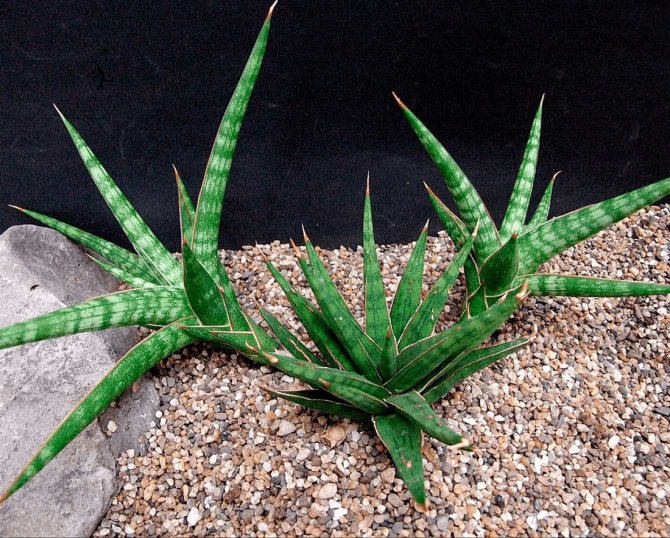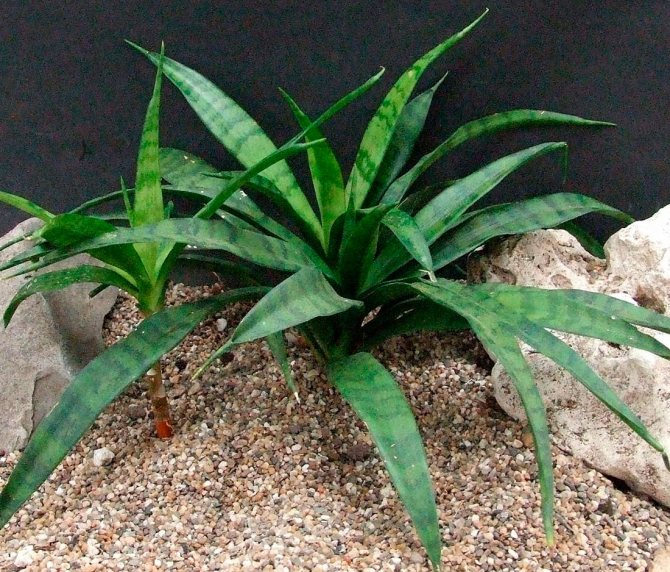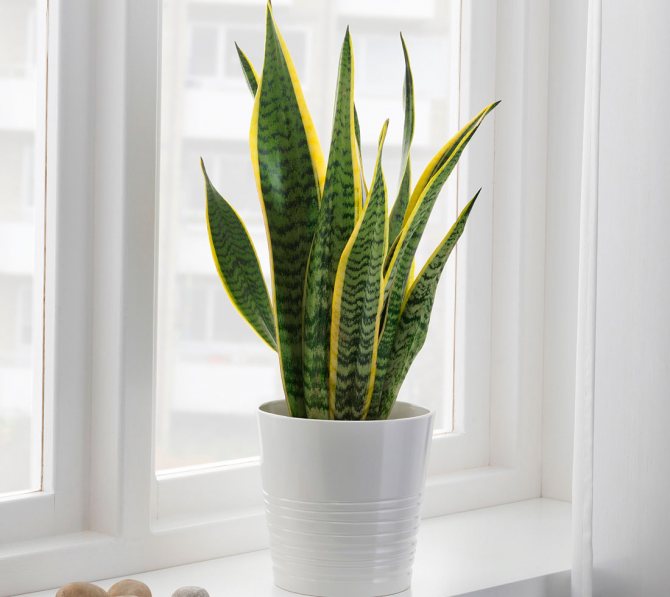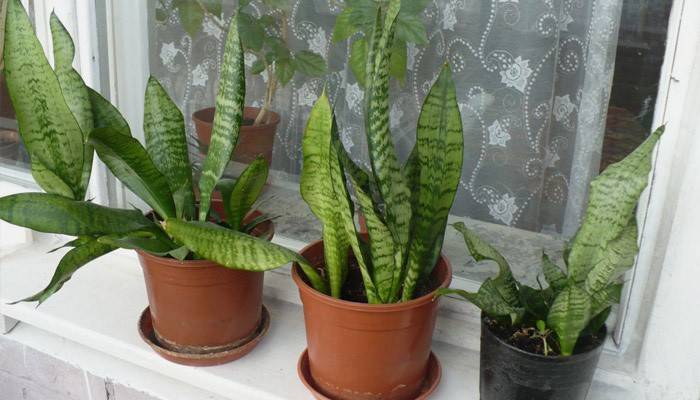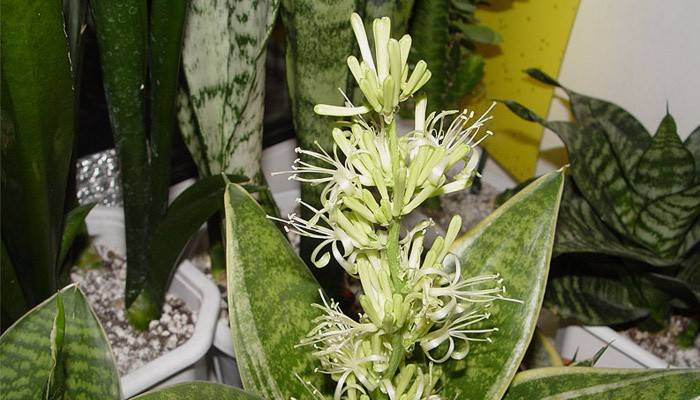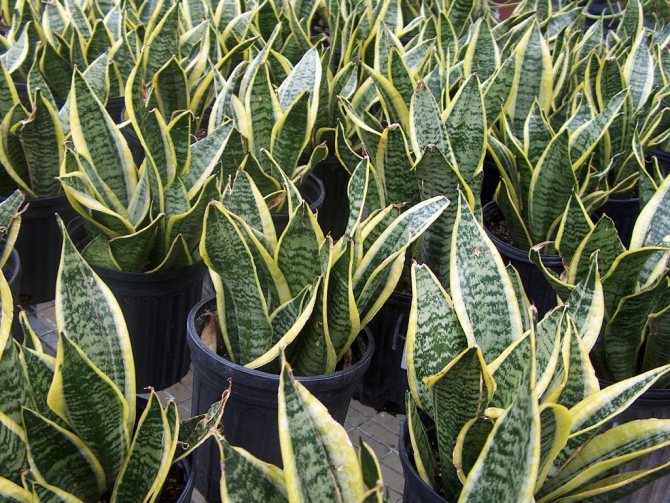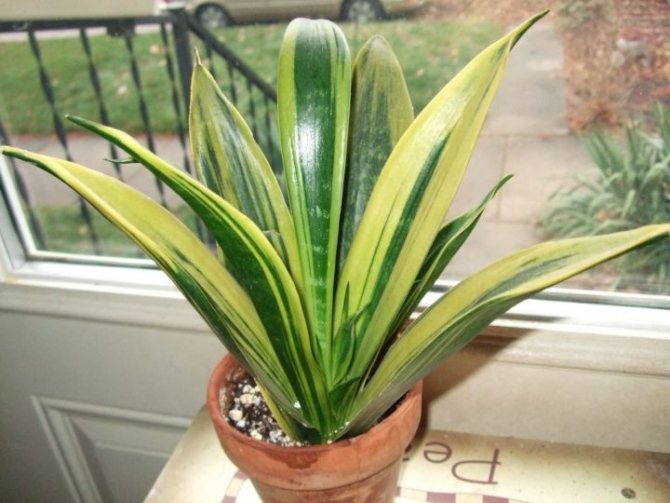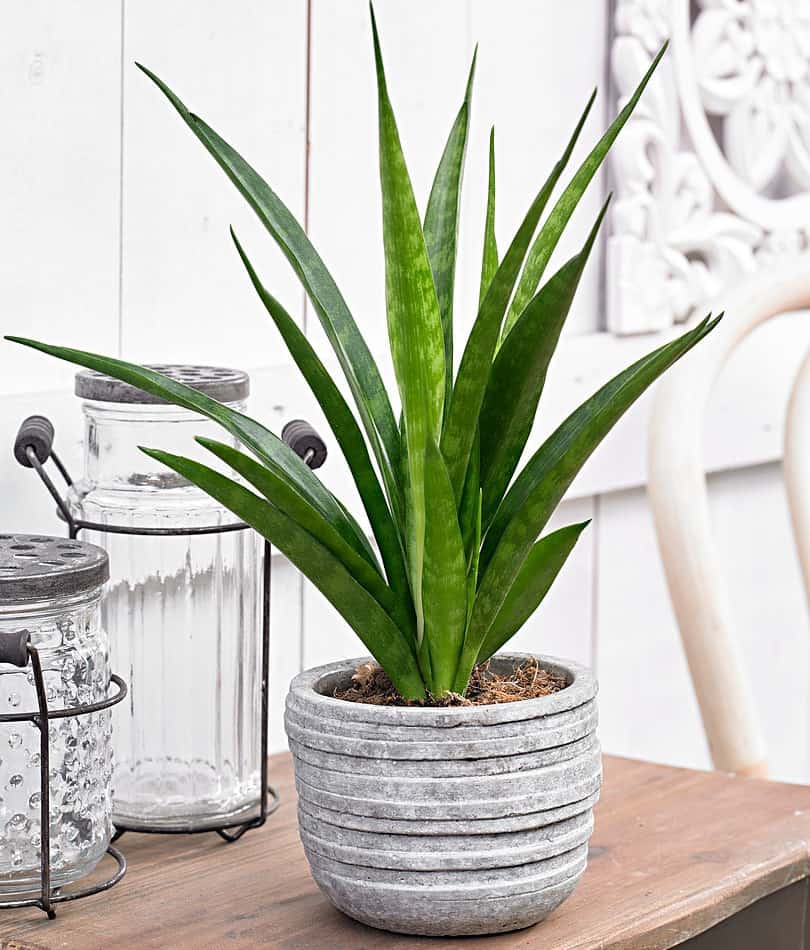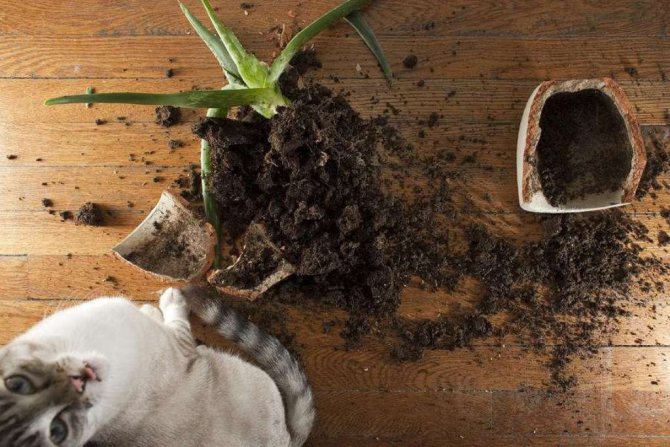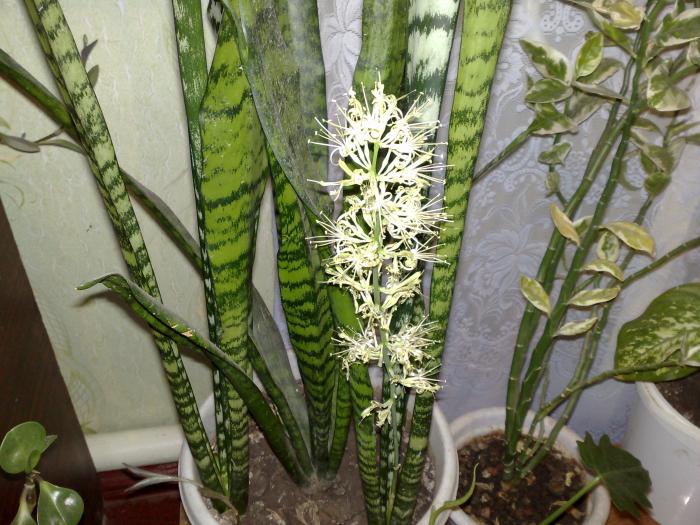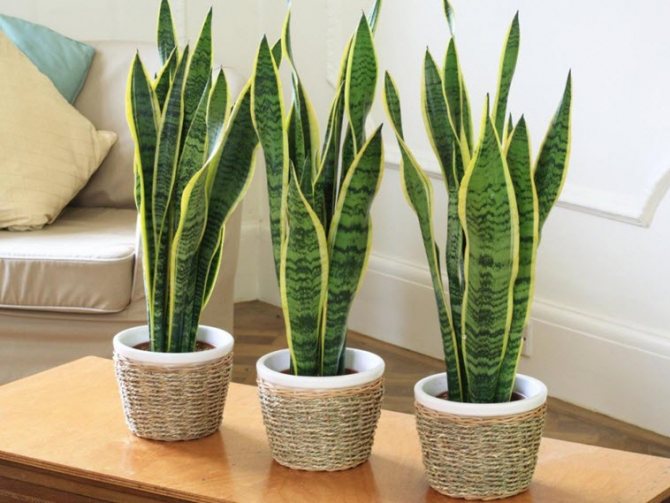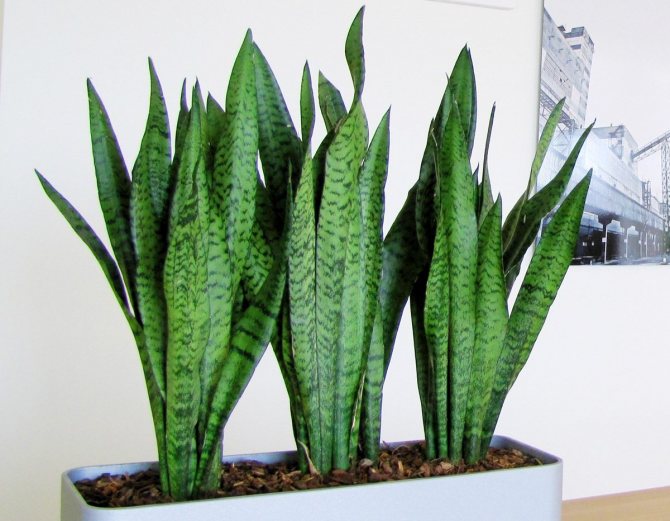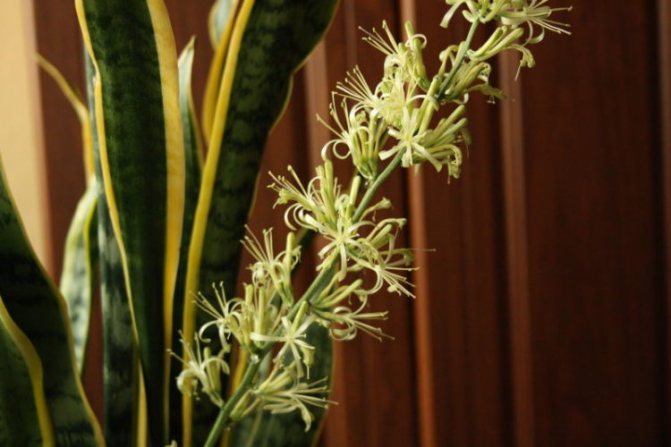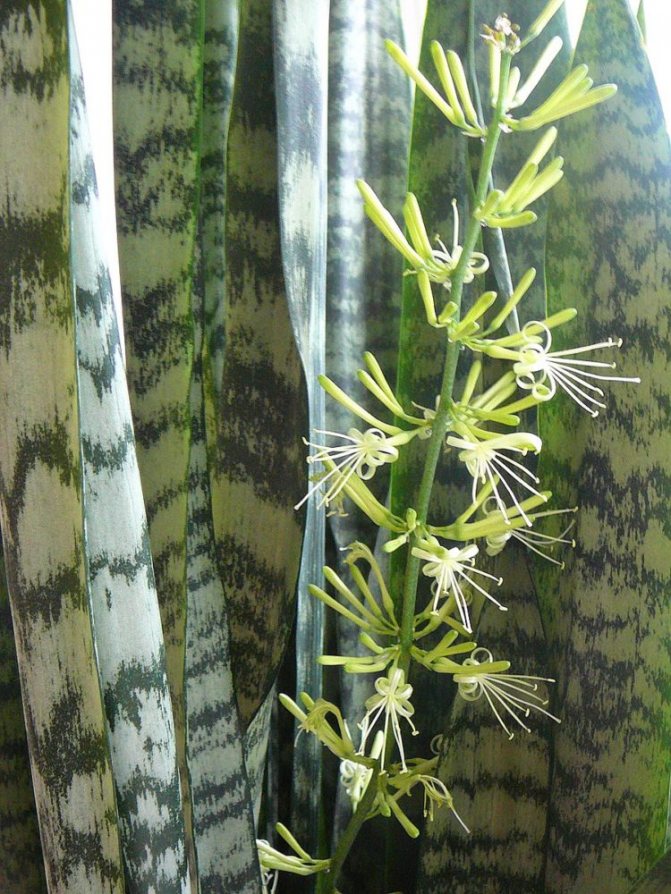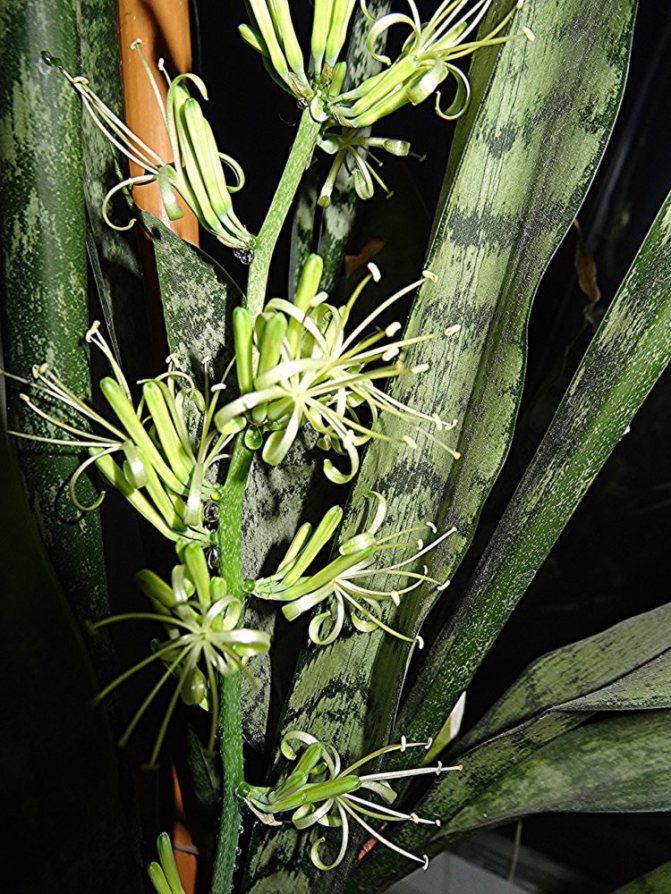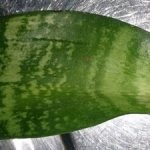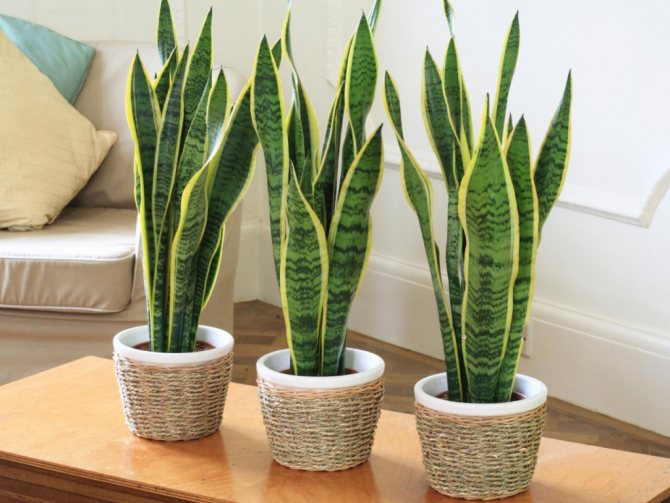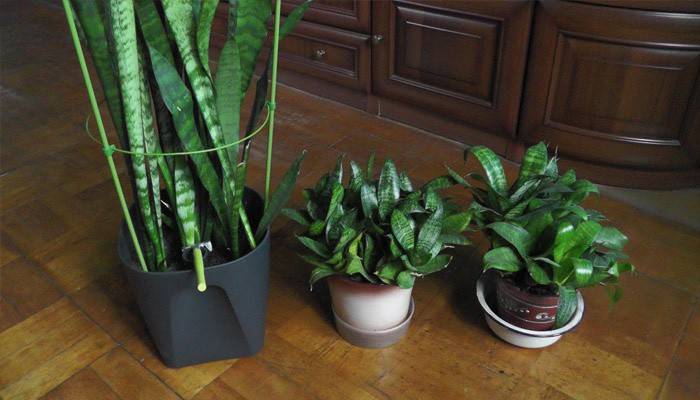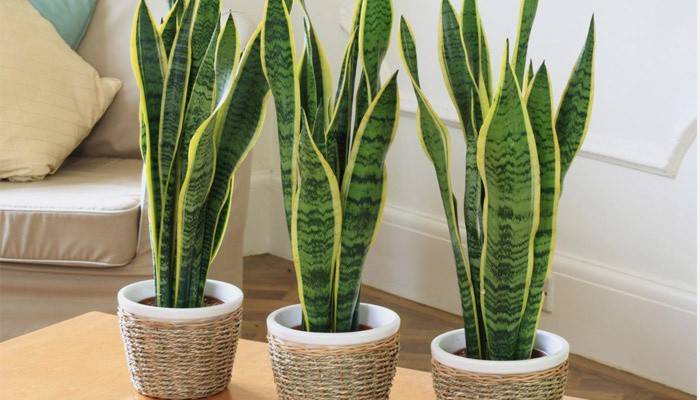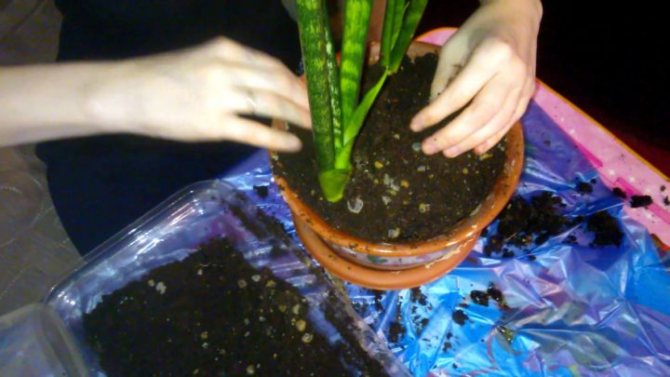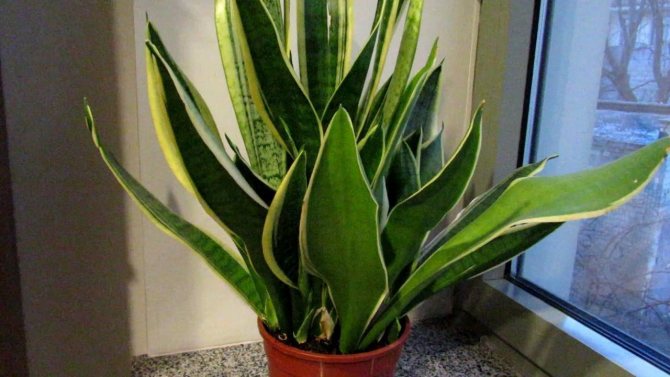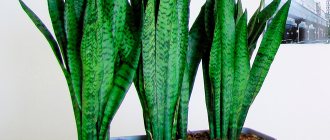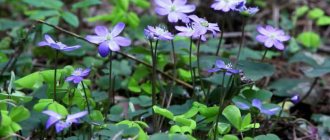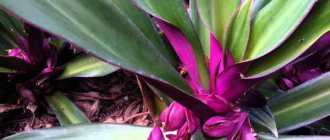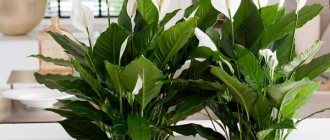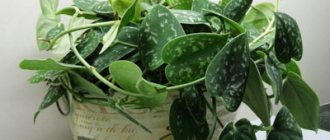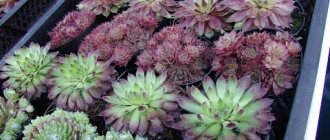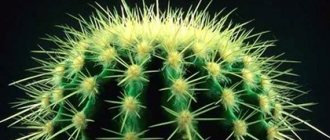Pike Tail has been living in our homes for a long time, and has established itself for its unpretentiousness. The plant has dark green leaf plates, sometimes varieties with a yellow stripe along the edge of the leaf are found. Its distinctive feature is that the flower does not have a stem when it grows.
Beautiful leathery leaves grow simply from the ground, forming a rosette of leaves. The birthplace of this plant is rainforests:
- Madagascar;
- Africa;
- Indonesia.
The origin of the plant
Sansevieria was first discovered in Africa. It happened in the 18th century. Subsequently, this plant was found in Asian countries, on the island of Madagascar, on the Arabian Peninsula, in India and Sri Lanka. The flower was described by the Italian botanist Prince Sanseviero, who made an invaluable contribution to the development of science.
Botanists and travelers were attracted by the appearance of the plant - its powerful dense leaves, original colors, strong root system. Sansevieria quickly spread throughout the world and gained a well-deserved popularity.
Reproduction in indoor conditions
Plant reproduces quite easily even a novice amateur florist and there are various ways for this. In the spring, any reproduction is carried out, since this is the beginning of the growing season and the damaged flower easily grows its lost parts. The easiest way, of course, to carry out reproduction by dividing the rhizome.
Rhizome division
With a complete transplant of a bush, the plant is disassembled into separate cuttings and the rhizome connecting them is cut. Sections are dried or sprinkled with cinnamon for disinfection. Then they are planted in the ground, as for the mother plant.
Side shoots
The shoot is separated by a sharp with a disinfected knife in rubbing alcohol. The separation takes place in such a way as to cut the rhizome connecting the baby with the mother bush in one motion. In this case, a part of the rhizome with the root system and a whole rosette of leaves should remain on the child.
After it is planted in the same ground in composition as for an adult plant and is not watered for a couple of days. After their expiration, the baby is taken care of in the usual mode for Pike Tail.
By sheet or by dividing it
Easily propagated by leafy plates or part of a sheet... But it should be noted that variegated varieties do not transmit their variety with such reproduction, children will grow without yellow or white stripes.
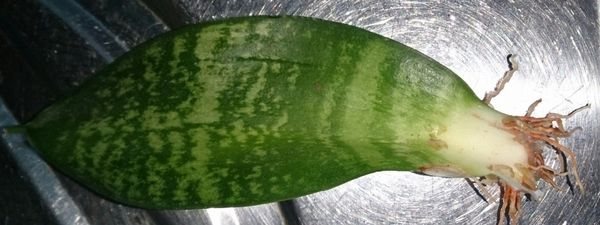
Remember to dry parts of the leaf before planting.
| Procedure | |
| Step 1 | Select an adult leaf, separate with a sterile instrument |
| Step 2 | Cut into pieces with a length of 5 cm or more. |
| Step 3 | Dry for 1 hour |
| Step 4 | Plant in washed river sand |
To create greenhouse conditions, the pot is placed in a plastic bag or covered with a transparent glass jar. After a couple of months, the leaf plates take root and give young shoots.
Description of the flower
Sansevieria belongs to the genus of perennial evergreen stemless herbaceous plants of the asparagus family. The Mexican agave belongs to the same genus, from which tequila is successfully made. It is characterized by the presence of fleshy, pointed to the top, leaf plates, which in natural conditions often reach a height of 1 meter.
Leaves can be located both vertically and horizontally. The color, as a rule, is motley - from light green to very dark shade. The plant has no stem. May bloom with good care.


Types of indoor flower Pike tail
There are two types of this plant:
- In the first type, one and a half meter sheet plates just grow upwards.
- The second forms dense rosettes up to 25 cm high
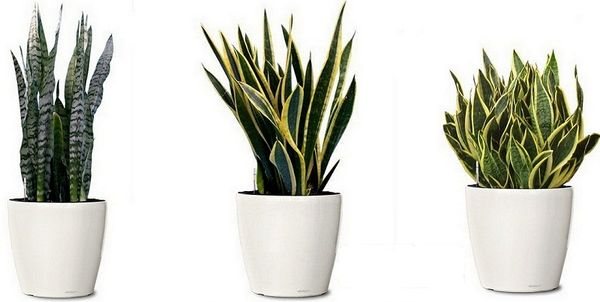

Unlike other colors, this one has only a few subspecies. For home, less tall is more often chosen
Both of these species have leathery leaf plates, at a more mature age, forming flowers located on the peduncle. Their flowers, unlike foliage, are less beautiful, but they have a wonderful vanilla aroma. Flowers open in the evening, filling the air with their pleasant scent.
The flower possesses creeping root system, with the help of which he occupies new territories for his growth.
The flower has a lot of varieties, here are the best:
Hanni
Low grade 30 cm has wide short leaf blades of dark green color. There is a yellow or light green stripe along the edges of the sheet. Quite often, garden centers sell varieties:
- Golden Hanni - has yellow edges of the leaf plate;
- Silver Hanni - Dark green stripes are located on the silver leaf.
Duneri
In this variety, leaf plates grow to a length of up to 40 cm. A width of 3 cm. Light green foliage with dark green fuzzy stripes is collected in a root dense rosette. Very much branches with rhizome and after a while forms thickets of low dense rosettes.
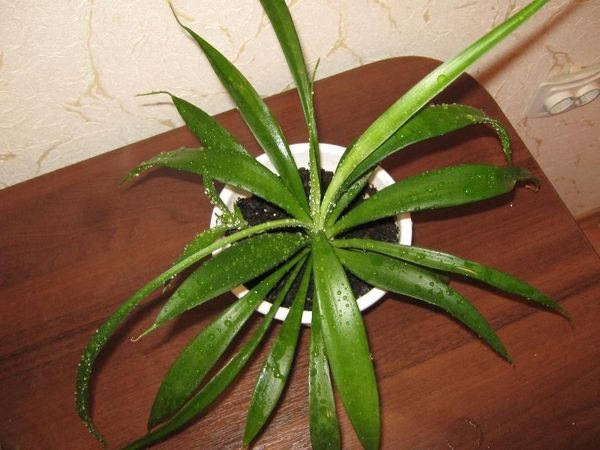

Duneri leaves reach almost half a meter long
The growing single flower stalk blooms with white flowers with a scent of lilac.
Pick
This variety has long leaves, growing up to one meter in one rosette of about three leaves. The leaf plates are dark green with white or light green spots on the leaf. Along the edge of the sheet plate is brown stripe.
Craig
This variety differs only in the presence of almost white foliage, on which dark green stripes are clearly visible.
Laurentiya
The variety has long meter sheet platesreaching a meter in length. There is a yellow stripe on the edges. The flowers are panicle-shaped and grow from the base of the Pike Tail rosette.


The outstanding length of laurentia leaves makes it stand out from the rest of the flowers.
The benefits of sansevieria
The pike tail is of great benefit both to the room where it is located and to its inhabitants:
- the flower is able to absorb all the negative accumulated in the room, including the magical one, as well as purify the air from harmful radiation that occurs during the operation of household appliances;
- the plant is an irreplaceable amulet against ill-wishers and envious people. It reflects all negativity and returns back to where it came from;
- Sansevieria improves the atmosphere in the home. Relieves its inhabitants from irritability, anger and aggression. Helps cope with stress;
- endows its owners with poise and tranquility. Strengthens qualities such as fortitude and endurance. Has the ability to attract material well-being and good luck.
Transfer
The transplant is carried out only if the root system ceases to fit into the container in which the Pike Tail grows. Therefore, the transplant is done on average once every three years... It is best to do it with the arrival of spring.
To begin with, select a pot with holes in the bottom, and pour 2 cm of drainage into it. Then a little prepared earth, on which the cutting is placed.
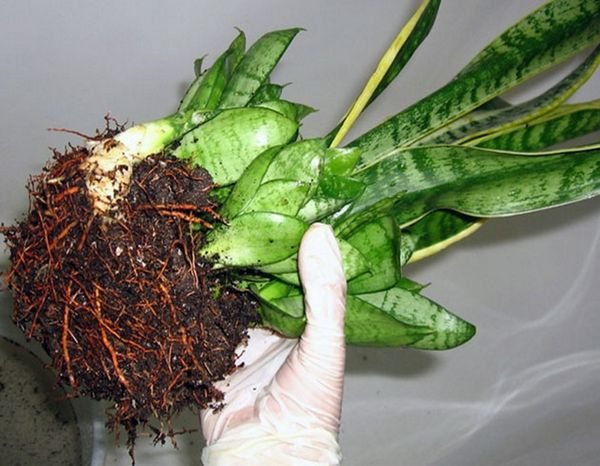

Excessive transplantation for no reason will only harm the plant.
If the stalk was purchased in a garden center, then all peat soil must be well removed from its rhizome.An old toothbrush can help with this, with the help of which, carefully without damaging the roots, we clean off the peat.
The flower peeled from peat is placed in a pot, and we pour soil around the outlet, squeezing it with our hands. If the variety is tall, then after transplanting it should be placed in a place where it will not hurt and then it will take root much faster.
The first watering after transplanting should be carried out two days later to allow the wounds that appeared during the transplant to heal.
What properties does
Some sources say that sansevieria has a heavy negative energy and is not recommended to be kept in an apartment. But these statements are greatly exaggerated. The flower works exactly the opposite:
- the leaves of the flower, like antennas, absorb negative energy, and radiate positive energy into space;
- sansevieria protects the house from the invasion of uninvited guests with unkind thoughts;
- this plant is able to reconcile those living in the house, bring harmony and peace to the relationship between household members;
- mother-in-law's tail is endowed with the ability to enhance feelings between spouses;
- gives strength for the implementation of all plans.


Rules for placing plants in the open field
If the climate allows and at night the temperature outside never drops below + 15 ° C, you can decorate your garden with a sansevier. It is better to carry out these works in late spring or early summer.
The landing site must be well lit, but do not be exposed to direct sunlight.
- For this, the soil is first prepared. You can compose it yourself from the following components:
- peat;
- sand;
- leafy land;
- humus.
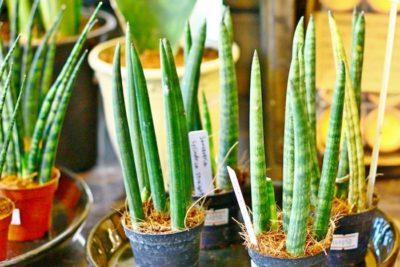

Then holes are made in the soil about 15 cm deep, into which new plants will be planted. The sections of the plants should already be treated with crushed activated carbon.- Drainage is added to the bottom of the holes - small stones, expanded clay, broken shards.
- Prepared soil is poured onto the drainage layer.
- Establish young plants with a height of 20 cm and from 5 leaves in a bush.
- Add more soil, water a little and crush the ground until the plant is completely fixed.
How does a flower affect health
Due to the fact that the pike tail emits positive energy into the space, and absorbs the negative, it helps to get rid of many health problems:
- relieves headaches, improves overall well-being;
- lowers blood pressure;
- relieves depression, helps to cope with nervous strain;
- the tongue growing in the mother-in-law's room will relieve fatigue and raise the tone;
- heal from stomach ulcers;
- the juice of the plant is an indispensable remedy for otitis media.
Step-by-step instructions for planting a flower
The roots of the flower do not grow in depth, but in width, and sometimes, having freed the plant from the old pot, the owner is surprised, contemplating a huge root spiral with young shoots on it. In nature, the root, not limited by anything, grows as it pleases, and new shoots of the sansevier simply sprout out of the ground along its entire length.
You will need:
- sharp knife;
- a new pot (or several, depending on how much the sansevier has grown);
- drainage;
- soil for succulents or neutral for ornamental deciduous plants (you can find out what the soil should be for sansevieria here);
- some crushed activated carbon.
Procedure:
- Slide the blunt side of the knife along the inside of the pot to separate the earthen ball.
- Remove the sansevier from the pot and gently shake off the old soil from the roots. This can also be done in a bowl of water by rinsing the roots.
- If there are many young plants, carefully cut the rhizome with a knife, leaving points of growth. Treat the cut points with coal. It is desirable to separate the babies from the mother plants. Leave to dry for a day or put in water, but both are not necessary for successful rooting.
- Pour expanded clay on the bottom of new pots according to the number of plants.
- Install a new sprout in each and sprinkle well with soil, tamp, water and, if possible, strengthen until the end of the adaptation period of the plant.
Reference: You can plant one at a time or several plants in one pot, but it must be remembered that each of them, becoming independent after separation from the common root, will start its own reproduction process.
Signs and superstitions
There are many signs and superstitions associated with the flower, both good and not so.
Positive
- If the flower looks good, its leaves are even and smooth, and the plant itself is healthy and lush, then there is good energy in the home.
- Sansevieria blooming in summer portends joyful changes, including the imminent appearance of offspring.
- If the flower is inherited, then its new owners will always live in harmony, and their house will be full of prosperity.


Negative
- Blooming in winter foreshadows troubles in the family or at work (quarrels, conflicts, discord).
- Leaves turned yellow at a flower - to parting with a loved one (beloved).
- The tops of the leaves are drying out - there is a person among relatives or close friends who brings negativity into the house.
- The plant has died - there are problems in the family (depression of one or several household members or there is a serious conflict situation).
Home care
Taking care of your pike tail is easy. This is a rather unpretentious plant that can withstand careless care:
- Poorly chosen place in a draft;
- Underfilling the plants;
- Incorrectly compiled soil.
To make the Pike Tail bushes more picturesque, the plant requires constant, but not painstaking care.
Humidity and watering
Air humidity is not important for the development of the vegetative mass of the plant, but it is good for moisture if it is wiped from time to time with a damp cloth from dust.
Plant does not tolerate constant humidity soil, if it is constantly poured, then after a while the rhizome will begin to rot.
Therefore, in the summer it is necessary to water it once every 10 days, and in the cold winter time it is enough for the earth to be barely wet. Therefore, the flower tolerates drought more easily than regular watering.
The fact is that the central leaf plates of the rosette are able to accumulate moisture in the middle of their leaves and this is enough to feed the plant. Watering itself must be done with the help, settled warm waterwithout hitting the center of the outlet. It is best to water by immersion in water or pour water into a sump.
Temperature and lighting
Pike Tail prefers temperatures up to 25 degrees in summer, while in winter about 15 degrees. The flower can survive a lower temperature, but then watering should be reduced to avoid decay of the creeping rhizome.
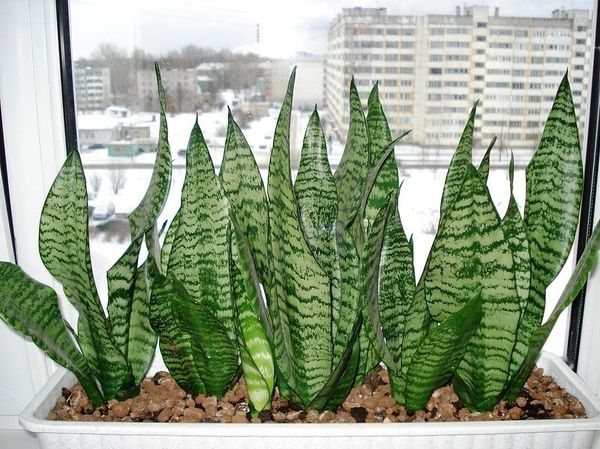

Observe seasonality when adjusting temperature
In its homeland, the flower grows in sunny places. Therefore, when choosing a place in an apartment for a container with a flower, it is better to put green monochromatic varieties on a sunny southern windowsill.
Varieties with a white or yellow stripe love diffused light, and therefore may burn out in the sun. They prefer the east direction.
In rooms without windows, the flower will not grow.
Soil and fertilizer
Special soil is not needed, since the plant is unpretentious and therefore you can compose it yourself, taking the components according to the given components:
- Sod land - 5%;
- Coarse sand - 25%;
- Leafy land - 75%.
All components should be disinfect by calcining the soil in the oven.
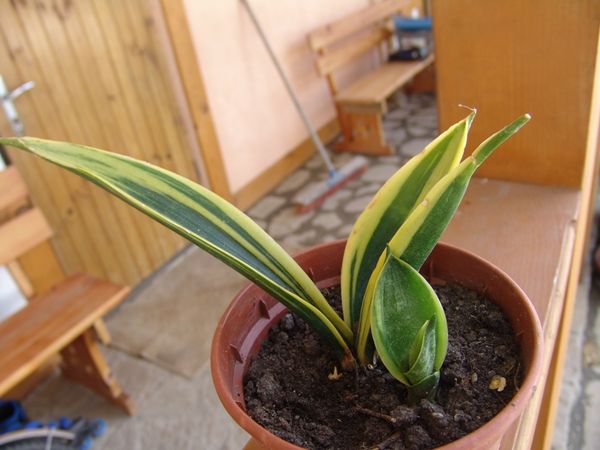

Do not forget to respect the proportions if you decide to prepare the soil yourself
You can fertilize the plant with nitrogen fertilizers, the dosage of which must be halved in relation to water according to the instructions.The flower is fed once every two weeks, since if you feed it more often you can cause rotting of the plant's root system.
Top dressing is carried out only on damp ground in order to avoid root burns. Newly transplanted plants into fresh soil are not fertilized for the first year, since there are enough microelements in fresh soil.
How to choose a pot
The capacity for the Pike Tail needs a low, since the root system located superficially and grows in width over time. For tall varieties, it is better to use small gravel for drainage, as it will act as a counterweight and prevent the pot from tipping over.
Diseases and pests - why are they dangerous and how to treat
This plant rarely gets sick, and all its diseases arise from the improper maintenance of the plant.
Diseases
The appearance of brown spots on the leaf plates is a sunburn, the plant needs to change its habitat in the apartment, rearranging it to a place where there is only diffused light and no direct sunlight.
The presence of yellow and soft leaf plates - tells us that the flower is watering too often... Therefore, the injured leaves are cut off, and the outlet itself is taken out of the ground, and if it is spring, then a complete transplant is made.
If the time of year does not correspond to the time of transplantation, you can get rid of excess moisture by wrapping the soil with disposable towels, which will absorb excess moisture.
Pests
Mealybug is a small pest up to 2 mm. length, which can be seen by the cotton deposits in the recesses of the socket. To get rid of this pest, you need to shed the soil with the chemical Actellic or Karbofos.
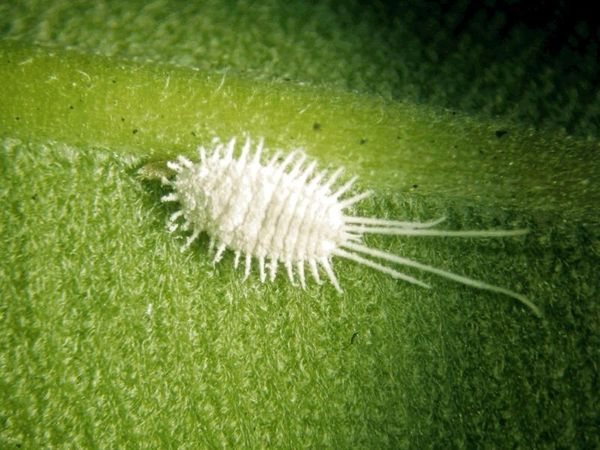

Inspect the plant regularly for pest infestation
Thrips - can be found on leaves along light silver spots... It can be destroyed by wiping the leaves with a damp cloth, and then with a cotton swab dipped in alcohol. If this does not help, then the earth is shed and the leaf plates are treated with Actellik's solution.
When and how it blooms
With proper cultivation, the flower can bloom in early spring. First, a flowering arrow appears, and only then flowers form on it according to the Pike Tail variety. Flowers bloom in the evening and scent all night, filling the apartment with vanilla aroma.
Feng Shui
Keep the plant at home in the right places. The plant has several amazing magical properties. One of them is the ability to absorb negative energy, so it is very often advised to place it near a computer or laptop.
This plant is also credited with the ability to help achieve its goals. Signs say that it can give inspiration, give confidence and strength, and also push forward. Its action extends to a career, and to study, and to other spheres of life in which there is a need for knowledge, skills and abilities. They put the plant in the workplace, in the office.
Read also: Why you can not store dried flowers in the house
Another property is helping the owner in the fight against laziness and giving strength to start a new business. Sansevieria also helps with work and learning new skills. It is recommended to arrange a flower for such purposes in the bedroom.
One of the most important properties attributed to this flower is the ability to have a beneficial effect on human health, to provide energy assistance during recovery.
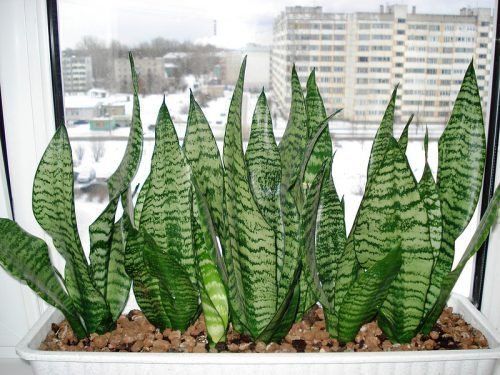

What if the plant does not take root?
Despite the fact that the sansevier is very unpretentious to care for, sometimes the rooted segments do not take root. What is the reason? As a rule, excessive watering is to blame for this, as a result of which rotting of the tip of the cutting after planting is possible. You can try to correct the situation by doing the following: get the petiole out of the ground, cut off the decayed tip, dry it in the open air, process it with Kornevin and root it again.You should also adjust the watering pattern so that this situation does not happen again.
Even a novice florist can propagate a favorite plant in this way. But it is important not to forget about proper care of the sansevieria, so that for more than one year, young and old plants decorate the interior of the apartment or the design of the flower bed with their original form.
When and how?
When asked when and how often sansevieria picks up buds, we can say that in most species flowering begins in summer, in others - in spring. Flowering is long and can even go up to three months. Each rosette blooms only once in its life, after the formation of a peduncle, it gradually dies off. When the sansevier begins to bloom, it happens as follows:
- First, the plant shoots a long arrow (peduncle).
- This arrow contains tiny whitish-green ripening flowers in cylindrical or spike-shaped inflorescences with nectar droplets under them.
We offer a visual video about how sansevieria blooms:
Below are photos of a blooming sansevier.
Photo
Below are photos of a blooming sansevier.
What to do after?
After flowering, it is worth providing the flower with normal care. It is necessary to feed the plants in small quantities with universal mineral fertilizers with a low nitrogen content for succulents once every half a month. It is not worth replanting the plant during this period.
It spends energy on flowering, because watering should be about once a week, and it is worth providing more indirect sunlight than usual. The temperature will go up to about + 20 ° С. Also it will be better if you wipe the leaves of the plant from time to time with a wet sponge or rag.
Description and features of sansevier
The aesthetic function of indoor plants, their benefits are beyond doubt. Moreover, it is scientifically proven that contemplating green spaces, even for a short time, relieves stress, increases performance and speeds up recovery.
The unpretentious sansevieria (pike tail) has a number of positive properties, it is capable of bringing real benefits to the ecological environment of a single apartment: it is enough to simply provide optimal growing conditions for it - and you can enjoy the results.
The pike tail is an evergreen stemless plant of the Agave genus with long narrow leaves, often colored with a longitudinal white or yellow stripe. It has many names, for example, anaconda skin, African hemp, devil's tongue. In Russian-speaking countries, the plant is known as mother-in-law's tongue, or pike tail. The official name is sansavieria, which the plant owes to the Italian prince Sansaviero, after whom it was named. Due to its unpretentiousness, the pike tail grows calmly in a dry and dusty climate, it celebrates itself perfectly in confined spaces. Pike tail was originally grown by those who did not prefer low-maintenance houseplants.
When talking about the benefits of a flower, it should be noted that sansevieria is not so harmless: it has its own specific properties that can harm the home.
Diseases and pests
Most often, keeping a pike tail is not difficult. You rarely encounter the following problems:
- Dark spots appear from a lack of light.
- From excess moisture begins to develop fungal infection... It appears as yellow-brown spots.
- Constant waterlogging of the soil leads to root rot, threatening the complete death of the flower. Yellowing of the edges of the leaves may be the first signs.
- The leaves become lethargic from the cold air.
- Variegated varieties of sansevieria become pale in poorly lit places.
- Not only the roots can rot, but also the base of the outlet due to the ingress of water into them or the content of the flower in a cold room.
- With frostbite, the leaves turn black and become soft.
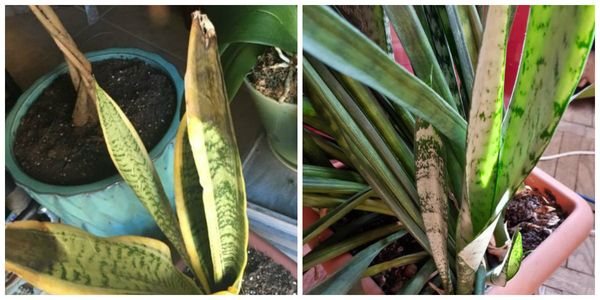

Of the pests, the whitefly, mealybug or thrips most often settle on the mother-in-law's tongue.
- Whitefly lives both in the ground and on the leaves. From touching the plant, small white moths begin to fly.
- Thrips settle on the flower in colonies, especially on the lower surface of the leaves. At the same time, they turn brown.
- Mealybug begins to spread from the base of the leaves in the form of a sticky white coating. The pest feeds on sap leaves, they curl, turn yellow and die off.
To combat them, insecticides for indoor plants, for example, "Aktara", have proven themselves well. Processing is carried out not only on the leaves, but also on the ground: the substrate is watered with a solution of the drug. Another way is to replace the top 3 cm of soil after processing.
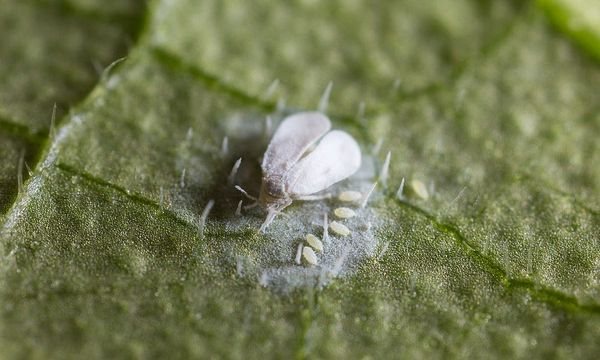

What medicinal products can be prepared from this plant?
Healing tincture
Ingredients:
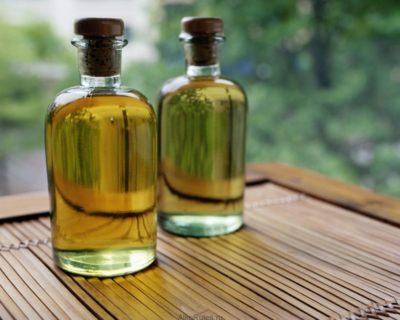

fresh leaves of sansevieria;- vodka - 0.5 l.
Preparation:
- Rinse the leaves, chop.
- Place 40 grams of crushed leaves in a dark glass jar.
- Pour in vodka.
- Close the lid.
- Keep container in a cool place for 20 days.
- Strain.
Keep refrigerated.
Mode of application: Take 15 drops orally twice a day after meals. The course lasts 15 days. Then take a break for 3 weeks, after which the treatment is repeated.
Indications for use: inflammation of the appendages, cystitis.
Decoction
Ingredients:
- one leaf of sansevieria;
- boiled water - 200 ml.
Preparation:
- Rinse raw materials under running water, dry.
- Chop finely.
- Pour boiling water over.
- Put the container with the mixture on low heat.
- Remove from the stove after 25 minutes.
- Strain the broth.
Mode of application: Take several sips of the broth throughout the day. You can use a lotion product.
Indications for use: scabies.
Ear drops
Preparation:
- Chop fresh leaves.
- Squeeze out the juice.
Mode of application:
- Heat the product in a water bath to a comfortable temperature.
- Instill in each ear canal 2 drops of juice 3 times a day.
Indications for use: ear pain, otitis media.
Name features
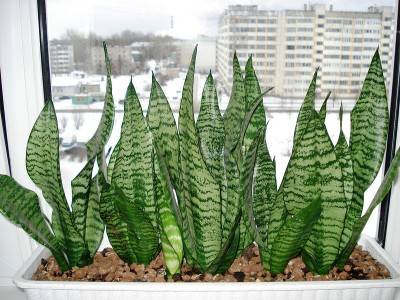

The official name "sansevieria" is rarely used to name this plant. In most cases, capacious colorful expressions are used in relation to him, reflecting the originality of the external appearance. All of them are associated with unpleasant objects and concepts:
- "Mother-in-law's language" gives rise to the most repulsive omens associated with backbiting. The very word mother-in-law speaks of the desire to command and get into other people's affairs.
- The pike tail is an unattractive part of a predatory fish. Again, something evil that is not useful.
- Wolf's Tail. Part of the predator again.
- "Indian swords". Weapon of murder.
- "The tongue of the devil" evokes associations with temptation and the focus of evil.
- "Snake skin" - duplicity and poison.
All these names, which were born by the popular consciousness as a reflection of the unusual shape of the leaves of this representative of the agave, in the same consciousness are associated with some kind of evil that can come from sansevieria. Thinking about whether it is possible to keep the mother-in-law's tongue at home, many, under the influence of rumors, begin to doubt.
How to avoid the consequences predicted in the signs
In order to avoid the consequences predicted in the signs, the owner of the pike tail must adhere to the following rules:
- try to place sansevieria in places of the greatest concentration of strangers in the house (living room, kitchen, hallway);
- do not put the mother-in-law's tongue at the head of the bed for spouses and small children;
- do not accept a pike tail as a gift from single women, widows and relatives from the side of the husband (especially women);
- do not accept mother-in-law's language as a gift for family dates: anniversaries, birthdays.
Sansevieria should receive the necessary care and, most importantly, please the owner.The pike tail subtly feels the energy of goodness, care and outgoing hostility from the owner.
The soil
The soil for sansevieria requires loose and nutritious. Potting soil is not difficult to prepare yourself. To do this, mix the following ingredients:
- turf humus (forest land from under oak or linden) 3 parts;
- humus (completely decomposed manure or compost) 1 part;
- horse peat (not sour) 1 part;
- coarse river sand 1 part.
It is advisable to spill all the components of the mixture with a raspberry solution of potassium permanganate, phytosporin, or fry for 15 minutes on a hot baking sheet for disinfection.
Important! At the bottom of the flower pot, when planting sansevieria, it is necessary to pour a layer of expanded clay or broken brick for drainage.




